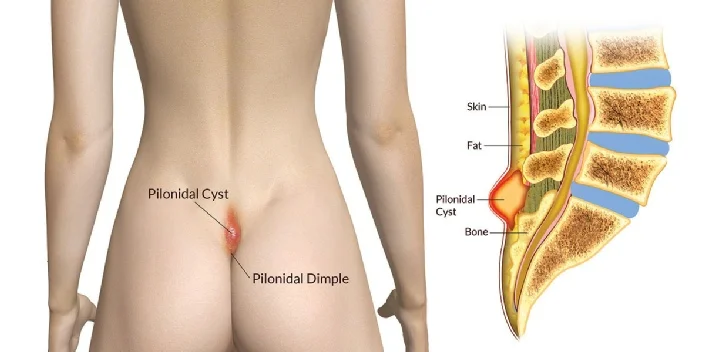Symptoms of Pilonidal sinus
- Throbbing pain that worsens on sitting
- Swelling, tenderness, itching or redness around the anus
- Discharge of pus, blood, and debris which is usually foul-smelling.
- Pain associated with bowel movements
- Fever.

Pilonidal sinus
A Pilonidal sinus also called Pilonidal cyst, sacrococcygeal fistula is a cyst (small sac) or tunnel in the skin. It develops over the tailbone at the top of the cleft of the buttocks. The cyst usually contains hair and skin debris. More than one cyst may develop and these are linked by tunnels under the skin.
Frequently asked questions
- It is not fully understood, but it may be due to hair getting trapped in the skin.
- LPP (Laser Pilonidoplasty) is an Advanced Laser Procedure for Pilonidal Sinus. The main advantage of LPP is faster recovery with negligible pain and recurrence rate
- Increased pain, redness, swelling, and drainage from the hole.
- Keeping the area clean and dry.
- Avoid sitting for long hours.
- Remove hairs from the area.
- If there is pus discharge from the cyst then surgery is recommended.



